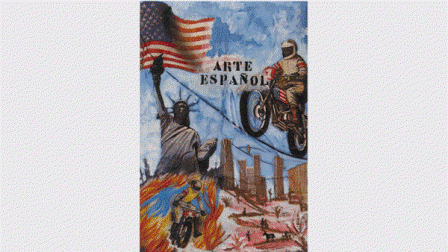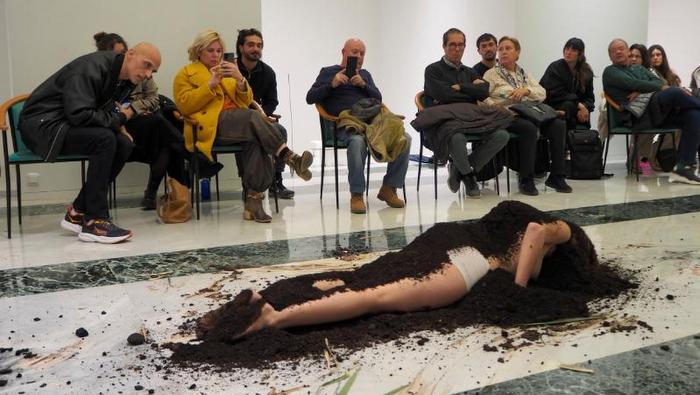 The Reina Sofia Museum in Madrid hosts until January 5, the exhibition "Atomic-Circus" by the Spanish artist Patricia Gadea (Madrid 1960 - Palencia 2006). This is the first retrospective of the artist as a major player and one of the leaders in the world of Spanish painting of the last third of the twentieth century, and representative of the Madrid New Figuration of the eighties and nineties, and one of the few painters of "La Movida Madrileña".
The Reina Sofia Museum in Madrid hosts until January 5, the exhibition "Atomic-Circus" by the Spanish artist Patricia Gadea (Madrid 1960 - Palencia 2006). This is the first retrospective of the artist as a major player and one of the leaders in the world of Spanish painting of the last third of the twentieth century, and representative of the Madrid New Figuration of the eighties and nineties, and one of the few painters of "La Movida Madrileña".
Curated by Virginia Torrente Bilbao, the exhibition brings together around120 works, mostly large paintings and a series of cardboard made in the Nineties. In addition, it will be seen a set of drawings from 1999 until her death, most of them unpublished, since between 2000 and 2006, far from artistic circles, "painting passed into the background and drawing had a greater role in her production ", as it is explained in the press note.
Within the exhibition highlights the 'Circus' series, made between 1991 and 1994, "which summarizes the events of that period in Spain as blunt irony impregnated messages, like the rest of the work of the artist, which date today remains an overwhelming clarity and contemporary, "says the note.
Patricia Gadea studied at the Faculty of Fine Arts at the Complutense University of Madrid. During the times of the Madrid scene and the start of democracy in our country, Gadea exhibited her early work that led to early success with exhibitions both in and outside of Spain, including galleries in Madrid as Group 15 and Montenegro . In the mid eighties, the artist moved to New York, a period that marked a turning point in her career, stating, for example, Bruno Fachetti gallery in 1989.
There she founded with her husband, Juan Ugalde (Bilbao, 1958), and the poet Dionisio Cañas, the group of artists called Estrujenbank, with several exhibitions and the publication of a book, until its dissolution in 1993. Through her involvement in this group, both Gadea and Ugalde greatly influenced the aesthetic changes that occurred in the last decade of the last century in Spain. Even then, her work received attention from critics, and it could be seen included in international exhibitions in 1987 in "Comic-iconoclasm" at the Institute of Contemporary Art in London and in 1988 in "Young Spanish Painting" in the Carrillo Gil Museum in Mexico City.
Her disruptive nature and interest in breaking the barriers between high and low culture led her, along with other artists, including her husband, Ugalde, to create a street art gallery into an existing underground between the street and Lagasca Retiro Park , which they named "Mari Boom" (to satirize the famous New York gallery Mary Boone). With her move to Palencia in 1996, the city where she remained until her death, her work becomes more intimate, serene and introspective, each more central and obvious once been the subject of women and the feminine in her work, and the role her primary support. A number of these drawings, unpublished until now, are shown for the first time in this exhibition.
Gadea, from the early 90s until the end of her life exhibited individually on several occasions with the Madrid gallery Masha Prieto -closed in January 2008, with whom she also would go to various editions of ARCO. In 2010, four after her early death, Segovia gallery coffered dedicated "perfumed Dynamite" and since the end of 2012, the Madrid gallery Garcia Gallery, which contains as one of its represented artists, organized "Patricia's War".
Her work is included in public and private collections including Chase Manhattan Bank, Reina Sofia Museum, Collection of the Community of Madrid, the Guggenheim Museum in Bilbao, Spain Bank Collection, Collection Banesto, La Caixa Foundation Collection, Collection L'Oreal Museum Union Fenosa Contemporary Art, MUSAC and ICO Foundation, among others.
Source: Arteinformado














